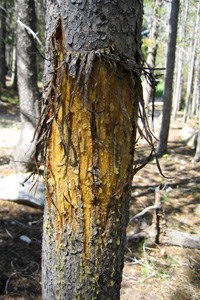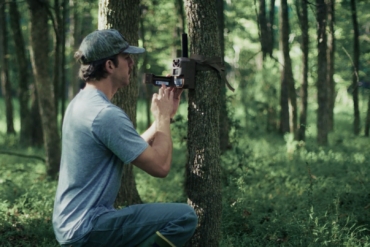Cougar attacks are rare, but it pays to play defensively in mountain lion territory. Here, we provide some tips on how to avoid these encounters and what to do in the rare event of an attack.

The news of two Washington state mountain bikers attacked by a cougar captured the media’s attention over the weekend. It was a horrific account that seemingly happened in spite of the victims reputedly “doing everything they were supposed to do.”
With growing populations of people living and playing closer to our wild lands, it’s unquestionable that humans find themselves in lion habitat. But as tragic as the news was, it’s important to note that attacks are exceptionally rare – the attack was the first in Washington in over 100 years.
But, should you come face-to-face with North America’s largest cat, these tips will stack the odds in your favor.
Meet the Mountain Lion
Cougar, puma, mountain lion, panther, catamount: Puma concolor goes by many names but is genetically the same species.
The mountain lion is the largest feline in North America. Depending on the sex, they can weigh 60–225 pounds and stand 2–3 feet tall at the shoulders. From tail to snout, the tan-colored cat can stretch 8 feet long.

Where Cougars Are Found
Once roaming freely across all of North America, ranchers, farmers, and hunters have pushed the cat out to the East Coast. In fact, the “Eastern cougar” has been delisted from the endangered species list and classified as extinct. In western states, the cat still looms large, though mostly in the shadows under cover of night and in the dusky hours in the early morning before sunrise.
Cougars travel across large ranges. An adult cougar frequents between 50 and 350 square miles. Being recluse hunters, cougars will use canyons, rocky terrain, and dense trees for cover.
Cougars hunt large mammals. If you’re out west of the Rockies and hiking in deer country, you can surmise you’re hiking in cougar country.
How to Identify Mountain Lions
“Mountain lions tend to be very secretive and elusive,” shared Roger Phillips, public information specialist with Idaho Fish and Game. “They are most active when they’re least visible.”
Still, the cat leaves traces of its existence. The following signs may indicate a cat is nearby:

- Tracks are 3–4 inches in diameter, with claws retracted.
- Scat (cougar droppings) is 4–6 inches long and about 1 inch in diameter, littered with bone and hair fragments.
- Cougars may scratch trees, leaving long, vertical claw marks on trees and posts 4–8 feet off the ground.
- A lion cry can be a haunting scream that carries over forested canyons.
How to Avoid Cougar Confrontation
- Don’t hike alone. Cougars are solitary animals. Hiking or trail running in groups puts the numbers to your advantage, decreasing the likelihood of being attacked.
- Keep children close while hiking in cougar territory. Children, being smaller, are more likely to be perceived as easy prey.
- Stand tall. Biologists speculate that a hunkered-over person can be mistaken as four-legged prey, triggering a cougar’s hunting instinct.
- If you stumble across a dead animal in the wild, leave it. It may have been cached by a cougar for a later meal.
Mountain Lion Encounter: What to Do
Should you see a cougar at a distance, “consider yourself fortunate enough to spot this elusive animal,” shared Phillips. If you’re close to the cougar, Phillips followed up with these guidelines:
- Do not run. Doing so triggers the cat’s hunting instinct. And because a cougar can chase you at about 40 mph, you won’t outrun it.
- Pick children up without bending over. You don’t want running kids to draw in a cougar.
- Remain facing forward. Never turn your back on the cat. Don’t crouch or try to hide. Stare it down! Eye contact is perceived as dominance in the animal kingdom.
- Slowly back away while facing the cat. Provide the cat an escape route.
If the Lion Moves Toward You
- Act dominant and intimidating.
- Yell firmly at the cat.
- Make yourself look as large as possible, waving your arms slowly or opening your jacket, standing on a rock or stump.
- Throw objects at the cougar. Rocks or sticks work well.
If the Cougar Attacks
- Fight back. Your safety is more important than the animal’s. Try to stay on your feet and protect yourself using sticks, rocks, trekking poles, or whatever you have available. Lions have successfully been driven away by prey that fights back.
- Use bear spray if you have it.
- Report all cougar sightings and attacks.
Phillips left me with a final comment that stuck in my craw but seemed to make some sense of the event in North Bend this past weekend.
“Mountain lions are highly territorial, and dominant cats will kill or drive others out of prime habitat for their prey into areas where the animal has a hard time finding food,” he said.
The young cougar that killed a mountain biker was reportedly severely underweight – nearly 100 pounds. Could it have been pushed out of its home turf, off fertile hunting grounds, and into new territory, struggling to find its next meal?
The cyclists in Washington did just about everything right. They faced the cougar, made noise, and even fought back. But the fight-or-flight response kicked in, and in the end, running away likely drew the starving cougar in for the fatal attack. It was a tragic end to a fluke of an encounter.







